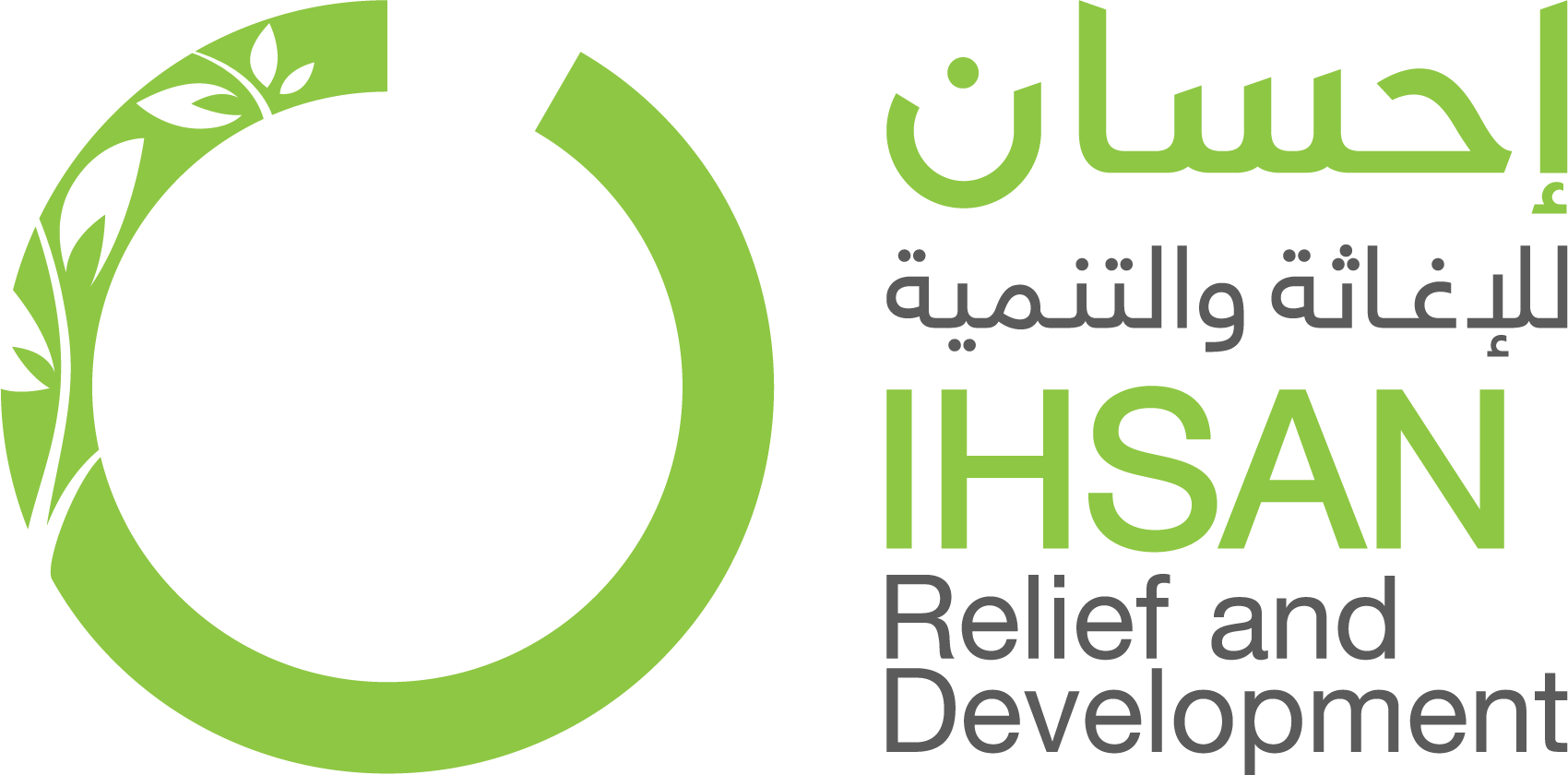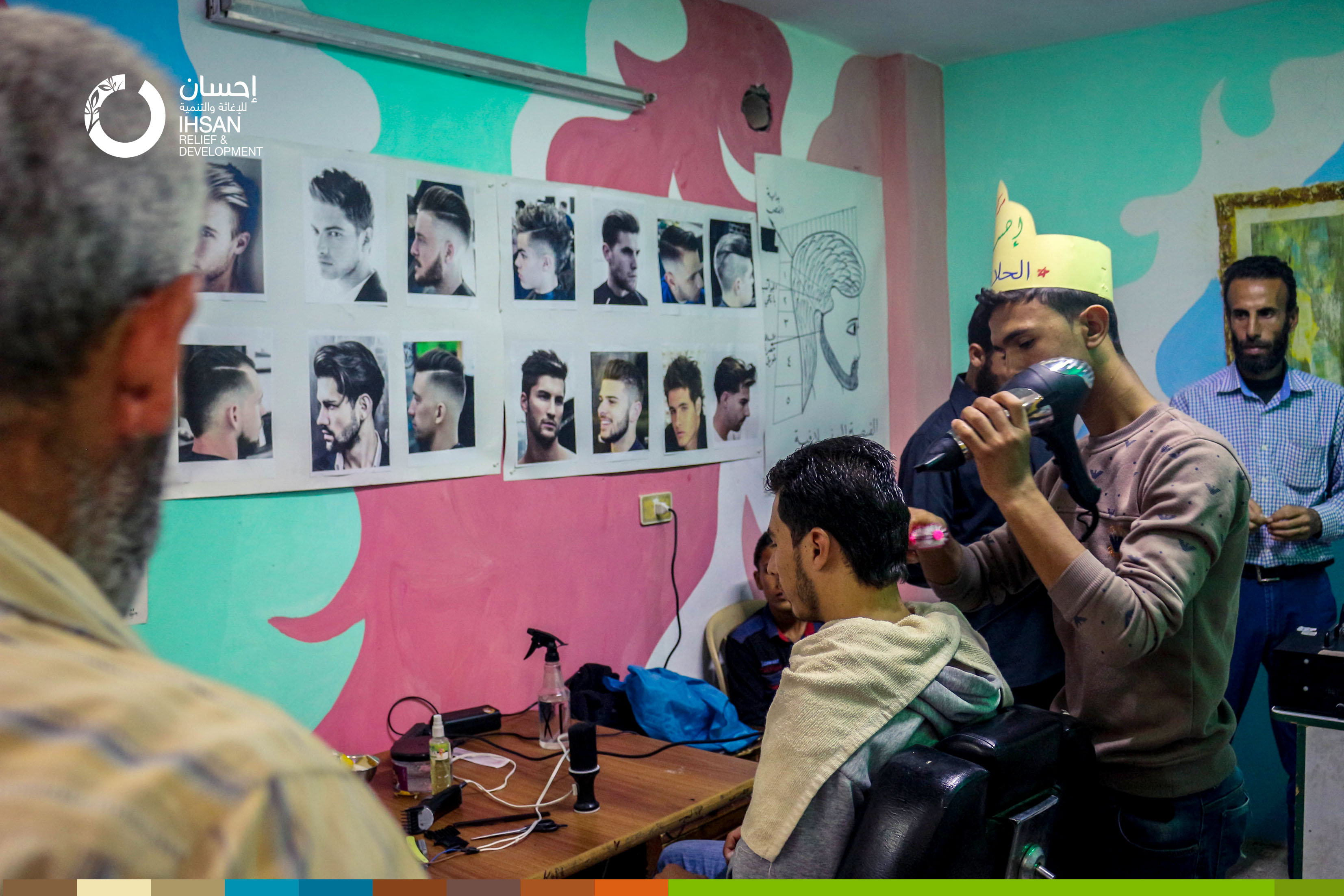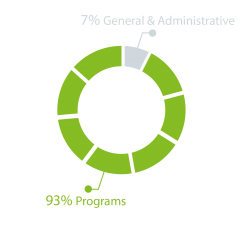
وكيل الأمين العام للشؤون الإنسانية ومنسق الإغاثة في حالات الطوارئ، مارك لوكوك
بيان إلى مجلس الأمن حول الأوضاع الإنسانية في سورية
عمان، 30 تشرين الأول/ أكتوبر 2017
كما أُلقي
سيدتي الرئيسة،
هذه هي افادتي الثانية حول الأوضاع الإنسانية في سورية. لقد ناقشت الموقف في عمان اليوم مع السلطات الأردنية وفريق القيادة الإنسانية التابع للأمم المتحدة في المنطقة. وهناك استنتاج واحد واضح: أن أثر الأزمة السورية لا يزال عميقاً. ستركز إحاطتي اليوم على القضايا الإنسانية داخل سورية، وسيتحدث المفوض السامي غراندي عن أوضاع اللاجئين يوم الخميس.
لا يزال أكثر من 13 مليون شخص داخل سورية بحاجة إلى المساعدة الإنسانية، من بينهم 6.3 مليون معرضين للخطر بشكل استثنائي وبحاجة ماسة إلى المساعدة جراء النزوح والأعمال القتالية ومحدودية القدرة على الحصول على السلع والخدمات الأساسية. ولا يزال النزاع وانتهاك القانون الإنساني الدولي هما المسببان الرئيسيان للحاجة الإنسانية، حيث يتعرض المدنيون في أجزاء كثيرة من البلاد لمعاناة هائلة.
لا تزال العمليات العسكرية والأعمال القتالية في بعض أجزاء البلاد، ولا سيما في الشرق، تتسبب في النزوح. وقد انخفض عدد النازحين داخلياً على المدى الطويل من 6.3 إلى 6.1 مليون شخص خلال العام الماضي، في حين تزايدت عودة النازحين، ولا سيما النازحين مؤقتاً، في بعض أنحاء البلاد، ولكن مستويات النزوح الجديدة ما زالت مرتفعة، حيث أفادت التقارير بأن 1.8 مليون شخص قد نزحوا خلال الفترة من كانون الثاني/يناير إلى أيلول/سبتمبر.
سيدتي الرئيسة،
أريد أن أشير إلى بعض المشاكل الحالية المحددة التي تثير قلقي بشكل خاص، وبعد ذلك سوف ألخص ما وصلنا إليه في الاستجابة الإنسانية.
إنني أشعر بالقلق إزاء تأثير القتال والغارات الجوية على المدنيين والبنية التحتية المدنية في محافظة الرقة، حيث تم الإبلاغ عن مقتل عشرات المدنيين في الأشهر الأخيرة. قد تتم إزاحة تنظيم الدولة الإسلامية من الرقة إلى حد كبير، ولكن بعد سنوات من القمع وما يقرب من عام من القتال المكثف، ستظل الاحتياجات الإنسانية كبيرة لبعض الوقت. ومنذ بداية الهجوم المناهض لتنظيم الدولة الإسلامية في تشرين الثاني/نوفمبر من العام الماضي، أدت الغارات الجوية والاشتباكات إلى نزوح أكثر من 436,000 شخص من الرقة إلى 60 موقعاً مختلفاً، من بينها المحافظات المجاورة.
كما يساورني القلق إزاء سلامة وحماية المدنيين المعرضين لخطر الذخائر غير المنفجرة في جميع أنحاء مدينة الرقة، ولا سيما أولئك الذين يحاولون العودة إلى ديارهم. وعلى الرغم من إصدار السلطات المحلية لتوجيهات إلى المدنيين بعدم العودة إلى المدينة حتى تُعتبر آمنة، فإن الأمم المتحدة تتوقع أن يعود الناس لمحاولة التحقق من سلامة منازلهم وأصولهم الشخصية وحمايتها.
وإلى الشرق، في محافظة دير الزور، ما زالت المعارك العنيفة والضربات الجوية تؤدي إلى مقتل وإصابة المدنيين. كما يستمر النزوح على نطاق واسع، حيث أبلغت المنظمة الدولية للهجرة عن نزوح نحو 350,000 شخص منذ شهر آب/أغسطس، بما في ذلك أكثر من 250,000 شخص في تشرين الأول/أكتوبر وحده.
وفي منتصف تشرين الأول/أكتوبر، وردت تقارير تفيد بأن نحو 15,000 شخص في مدينة الميادين والمناطق المحيطة بها في محافظة دير الزور لم يحصلوا على خدمات صحية في أعقاب الغارات الجوية على المدينة، التي جعلت المستشفيات والنقاط الطبية غير صالحة للعمل. وأفادت منظمة اليونيسف ومنظمة الصحة العالمية بأن الهجمات على الميادين قد دمرت غرفة تبريد اللقاحات، مما أسفر عن فقدان ما لا يقل عن 140,000 جرعة من لقاحات الحصبة وشلل الأطفال كانت قد وفرتها الأمم المتحدة. وإلى أن يتم بناء غرفة حفظ لقاحات جديدة وتوفير معدات سلسلة التبريد المطلوبة – بما في ذلك الثلاجات التي تعمل بالطاقة الشمسية وصناديق التبريد وحاملات اللقاحات – سيتم تأجيل التحصين الروتيني للأطفال المعرضين للخطر في المنطقة. وتُعد هذه نكسة بشكل خاص للجهود الرامية إلى القضاء على أحد أكبر حالات تفشي مرض شلل الأطفال في العالم في الذاكرة الحديثة، وهو تفشي لا يزال يجتاح دير الزور على وجه الخصوص، نظراً لاستمرار الإبلاغ عن حالات جديدة.
وفي محافظة حمص، أفادت التقارير على مدى 20 يوماً من الشهر الحالي بأن تنظيم الدولة الإسلامية قد أعدم ما لا يقل عن 128 شخصاً في عمليات قتل انتقامية، متهماً إياهم بالتعاون مع الحكومة السورية.
وتشير التقديرات إلى أن ما يقرب من 50,000 سوري لا يزالون عالقين في الصحراء بمنطقة الركبان عند الساتر الترابي الكائن على الحدود السورية الأردنية. لم يتم توزيع المساعدات الغذائية التي تقدمها الأمم المتحدة إلى هؤلاء الناس في العام الماضي سوى مرتين فقط، وقد مضت أربعة أشهر على آخر توزيع جزئي. ونظراً لوصول سلع تجارية محدودة إلى الركبان، فإن القدرة على الحصول على الغذاء غير مستقرة، ولا تزال الحالة العامة سيئة. ومع اقتراب أشهر الشتاء، سيزداد هذا الوضع حدة. وتؤكد التقييمات الجارية والبيانات المجمعة من خلال العيادة الصحية التابعة للأمم المتحدة أن الوضع لا يزال وخيماً. ولا بد من إيجاد حل دائم وطويل الأجل لمحنة هؤلاء الناس. وفي الوقت نفسه، فإن الوصول الفوري لتمكين إيصال المساعدة المنقذة للحياة إلى السكان المدنيين أمر بالغ الأهمية. ومن الواضح أن النهج الأفضل هو إيجاد حل من داخل سورية، ونحن نبذل قصارى جهدنا لتحقيق ذلك. ومهما حدث، فمن واجبنا الجماعي أن نتجنب كارثة إنسانية أخرى في سورية.
سيدتي الرئيسة،
لا يزال نحو ثلاثة ملايين شخص في سورية يعيشون في مناطق محاصرة وأماكن يصعب الوصول إليها.
في الغوطة الشرقية، تواصل الإبلاغ عن قصف يومي خلال الأسابيع الأخيرة. وتقلصت بشدة إمكانية إيصال المساعدات الإنسانية إلى الغوطة الشرقية منذ عدة أشهر، وهي واحدة من أربع مناطق تخضع لاتفاق تهدئة الصراع ويعيش بها نحو 95 بالمئة من المقيمين في المناطق المحاصرة وتلك التي يصعب الوصول إليها في سورية. ومنذ بداية العام، تلقى 110,000 شخص مساعدات غذائية، من بين ما يقدر بنحو 400,000 شخص. واليوم، قدمت الأمم المتحدة وشركاؤها مساعدات غذائية وصحية إلى 40,000 شخص. وقد سُجل عدد مفزع من حالات سوء تغذية الأطفال هناك، ويوجد أكثر من 400 شخص يعانون من مشاكل صحية ويحتاجون إلى إجلاء طبي. إنني أضم صوتي إلى دعوة برنامج الغذاء العالمي وغيره من المنظمات إلى ضمان إيصال المساعدات الإنسانية دون إعاقة.
سيدتي الرئيسة،
في ظل هذه الخلفية، تواصل الأمم المتحدة وشركاؤنا في سورية تنفيذ إحدى أكبر العمليات الإنسانية في العالم. إننا نصل إلى ملايين الأشخاص كل شهر. فعلى سبيل المثال، قدم برنامج الغذاء العالمي في أيلول/سبتمبر مساعدات غذائية إلى أكثر من 3.3 مليون شخص، ووصلت منظمة اليونيسف إلى أكثر من 1.5 مليون شخص، ووصلت منظمة الصحة العالمية إلى أكثر من 800,000 شخص. ولقد أكملنا للتو جزءاً كبيراً من العمل لتحليل تنفيذ الأنشطة حتى الآن هذا العام، وقدمت لكم بشكل منفصل بيانات جديدة عن ذلك.
أود أن أحيطكم علماً بأخر تطورات الموقف المتعلق أولاً بالمساعدة الإنسانية في المناطق التي تسيطر عليها الحكومة السورية؛ وثانياً، بالأنشطة التي تتم عبر خطوط النزاع؛ وثالثاً، بالأنشطة المنفذة عبر الحدود.
في الفترة من كانون الثاني/يناير إلى آب/أغسطس من هذا العام، وصلت برامج الأمم المتحدة والمنظمات غير الحكومية، التي نُفذت بالتعاون الوثيق مع مختلف الوزارات التنفيذية في الحكومة السورية، إلى ما يزيد قليلاً عن أربعة ملايين شخص شهرياً في المناطق الخاضعة لسيطرة الحكومة. ولا تزال هذه البرامج تمثل الغالبية العظمى من عملنا داخل سورية.
وبعد ذلك، تأتي الأنشطة المنفذة عبر خطوط النزاع. لا زلنا نواجه تحديات كبيرة في تلبية الاحتياجات الإنسانية للناس المقيمين في المناطق التي يصعب الوصول إليها والمحاصرة. وكما أشار الأمين العام في تقريره الشهري إليكم، فإن هناك توقعاً بأن يؤدي إحراز تقدم في التهدئة إلى زيادة إمكانية إيصال المساعدات الإنسانية. وعلى الرغم من أننا نواصل العمل المضني في هذا الشأن، جنباً إلى جنب مع الآخرين، فإن هذا الهدف لم يتحقق بعد. ومنذ بداية العام، تمكن في المتوسط أقل من ربع قوافل الأمم المتحدة المشتركة بين الوكالات وعبر خطوط النزاع المطلوب تنفيذها في إطار الخطط الشهرية ونصف الشهرية من المضي قدماً. وحتى الآن في تشرين الأول/أكتوبر، وصلت القوافل المشتركة بين الوكالات مجتمعة إلى أقل من 200,000 شخص. وفي المتوسط، تم الوصول إلى 10 في المئة فقط من سكان المواقع المحاصرة لتقديم مساعدات الأمم المتحدة كل شهر في هذا العام، وهذا هو المجموع الذي بلغناه حتى الآن في شهر تشرين الأول/أكتوبر، مع أخذ المساعدات التي تم تسليمها اليوم بعين الاعتبار.
ولا تزال إزالة الأدوية المنقذة للأرواح واللوازم الطبية مستمرة. لقد أطلعناكم على ذلك من قبل.
ويحدوني الأمل في أن يتم إحراز تقدم حقيقي وملموس في الأيام القادمة من خلال آلية التنسيق الثلاثي في دمشق.
سيدتي الرئيسة،
كما ذكرت في الشهر الماضي فإن المساعدات عبر الحدود، التي يتضمنها قرار مجلس الأمن رقم 2165 كانت بمثابة شريان حياة. لقد مكنت هذه المساعدة الأمم المتحدة من الوصول إلى ملايين المحتاجين في شمال وجنوب سورية. ومنذ بدء عمليات الأمم المتحدة عبر الحدود في تموز/يوليو 2014، أرسلنا أكثر من 16,400 شاحنة تحمل المساعدات عبر المعابر المصرح بها إلى داخل سورية. وفي المتوسط، تم تسليم المساعدات إلى 2.76 مليون شخص شهرياً من خلال عمليات عبر الحدود بين شهري كانون الثاني/يناير وآب/أغسطس من هذا العام. وقد تم الوصول بانتظام إلى نسبة كبيرة من ملايين الأشخاص المحتاجين للمساعدة في شمال وجنوب سورية على حد سواء؛ ليس مرة واحدة أو مرتين فحسب، بل على نحو متسق ومنهجي طوال السنوات الثلاث الماضية. إن خبرتنا في العمليات عبر خطوط النزاع من داخل سورية، والتي أشرت إليها للتو، تقودنا إلى الاعتقاد بأنه سيكون من المستحيل الوصول إلى هؤلاء الأشخاص بطريقة مستدامة من داخل سورية. ولذلك، فإنني أعتبر تجديد القرار 2165 أمرا أساسياً، لأن ملايين الأشخاص يعتمدون على الأنشطة التي يتضمنها القرار.
شكراً سيدتي الرئيسة.











